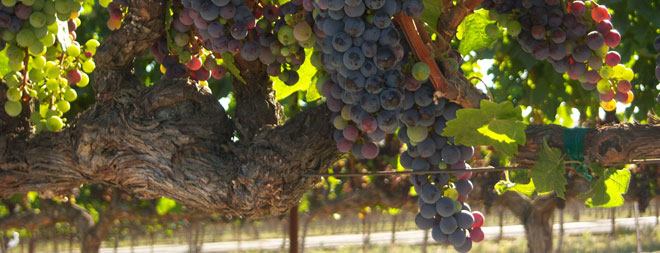Optical Technique Sorts Grapes for Wine Quality

(ISNS) – A team of German scientists has developed an automated process that sorts grapes into different levels of quality for winemaking. The goal of developing the technique is to produce wines that will satisfy refined palates but cost less than current prices.
While it's not ready for full-scale use for this year's harvest, the scientists plan to have the "Grape Sort" technology ready by the fall of 2014. The process relies on optical technology that recognizes the colors of individual grapes. Different colors correspond to different amounts of sugar in the grapes, a basic criterion for their wine-making characteristics.
The technology has proved itself in preliminary tests on some of Germany's favorite home-grown varietals: the grapes for white wines Riesling and Weisser Burgunder and those for the red wines Trollinger and Lemberger.
"Our experiments have proven that wine quality has obviously improved due to our sorting," said Kai-Uwe Vieth of the Fraunhofer Institute for Optronics, System Technologies and Image Exploitation (IOSB) in Karlsruhe, Germany, who oversaw the project.
The new system has two goals.
First, it removes foreign objects such as stems, leaves, and insects such as beetles from the grapes – a capability that some wineries already possess in other optical approaches.
Second, the German technology goes beyond rival systems by distinguishing among different qualities of individual grapes. In that process, Vieth explained, the technology works faster and more objectively than manually sorting each individual grape, a traditional but time-consuming method used by vintners.
Sign up for the Live Science daily newsletter now
Get the world’s most fascinating discoveries delivered straight to your inbox.
"Its high throughput allows us to harvest and select grapes which would not normally be worth harvesting," he said. "And the winemaker determines the quality by setting the appropriate parameters. So the quality does not depend on the person who does the hand-sorting."
"Although optical sorting has been used for years in related industries such as the cork industry, its application in the wine industry is pretty new," said Anita Oberholster, a specialist in enology, the study of wine and winemaking, at the University of California, Davis. "Presumably this improves 'quality' as well as saving on labor and processing hours."
In an experiment to compare optical grape-sorting with hand-picking earlier this year, Oberholster's team set up an optical sorter to exclude up to 10 percent of the berries on the basis of poor quality. "The wines are currently settling and we will start chemical analysis soon," she said.
The German process uses a special conveying system to load de-stemmed grapes onto a belt that travels past a sorting module. A high-speed line scan camera photographs the grapes as they pass.
After the scan, the system's software takes over. Based on its analysis of the colors of individual items on the belt, it controls air jets that blow bad grapes and detritus off the belt and sorts the remaining berries into grades for production of various qualities of wine.
In effect, the software takes over the role of categorizing individual grapes from human experts. It does so more cheaply and consistently.
"We have a teaching process which allows us to sort the grapes based on different criteria," Vieth said. "When the grapes are scanned permanently by line-scan cameras, the data stream is processed within tens of milliseconds."
The technology that the process uses to separate grapes of different wine-making characteristics remains secret. However, Vieth said, "we use color – both visible and non-visible light – and geometry features to separate the qualities."
When German vineyards wanted an automatic process for sorting their grapes, Fraunhofer IOSB presented an obvious choice, owing to its experience developing machines that sort tobacco, minerals, foods and more. "So in response to companies and winegrowers, we started to do some sorting tests during the harvest season," said Vieth.
Developing the technology involved significant teamwork.
Fraunhofer IOSB developed the imaging technology, image processing, and software. Two German companies – Armbruster Kelterie-Technologie, based in Güglingen-Frauenzimmern, and Ingenierubüro Waidelich of Tubingen – worked on the mechanical tasks such as de-stemming the grapes and some of the electrical processes.
One more ingredient was essential.
"It was clear to us that, while we are experts in imaging, real-time data processing, and developing sorting systems, we lacked knowledge of grapes," Vieth said. So the team incorporated experts from Geisenheim University’s Grape Breeding Institute, an institution that offers higher degrees in winemaking and dates back to 1872.
"The university is responsible for everything related to wine growing, selecting the grapes for the tests, performing all the laboratory analysis, and making wine out of the selected grapes," Vieth said. University viticulture experts will also put the resulting wines through taste tests.
This story was provided by Inside Science News Service. A former science editor of Newsweek, Peter Gwynne is a freelance science writer based in Sandwich, Massachusetts.









